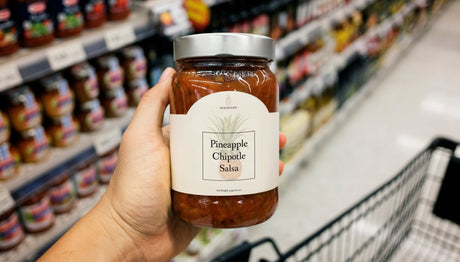In the food industry, delivering hot and fresh meals to customers is crucial, especially in the age of takeout and delivery services. Nothing is more disappointing than receiving a lukewarm meal that was meant to be enjoyed piping hot. This is where the science of heat retention in food packaging comes into play. Understanding how packaging materials and design work to maintain temperature can help your business ensure that every meal reaches your customers in the perfect state.
1. Understanding Heat Retention
Heat retention in food packaging refers to the ability of the packaging material to maintain the temperature of the food inside, preventing it from cooling down too quickly. This is particularly important for hot meals, such as soups, pizzas, and entrees, where temperature can directly impact the taste and texture of the food.
The key to effective heat retention lies in the thermal properties of the packaging material. Materials with low thermal conductivity, such as aluminum, foam, and certain plastics, are better at retaining heat because they slow down the transfer of heat from the food to the surrounding environment.
2. The Role of Insulation
Insulation is a critical factor in heat retention. Insulated packaging creates a barrier that slows down heat loss, keeping the food warm for longer periods. This can be achieved through various means:
Foam Containers: Foam is a popular material for insulated food packaging due to its excellent heat retention properties. The tiny air pockets within the foam reduce heat transfer, helping to keep food hot for longer.
Double-Walled Containers: These containers have two layers of material with an air gap in between, which acts as an insulator. This design reduces heat loss, making it ideal for hot drinks and meals that need to stay warm.
Reflective Materials: Some packaging uses reflective materials, like aluminum foil, to bounce heat back into the food. This method helps maintain the food’s temperature by minimizing heat loss through radiation.
3. Packaging Design for Heat Retention
The design of the packaging also plays a significant role in heat retention. Effective packaging design minimizes the exposure of the food to the outside air, which can cause it to cool down rapidly. Here are some key design considerations:
Tight Seals: Packaging with tight seals or snap-on lids helps prevent heat from escaping. For example, clamshell containers with secure closures are commonly used for hot meals like burgers and sandwiches.
Ventilation Control: While it’s important to retain heat, proper ventilation is also necessary to prevent condensation from making the food soggy. Many packaging designs include small vents that allow steam to escape without compromising heat retention.
Compartmentalization: Dividing packaging into compartments can help maintain the temperature of different food items, especially when combining hot and cold foods in the same container. This keeps the hot items warm without heating up the cold ones.
4. Innovative Materials in Heat Retention
The packaging industry is constantly evolving, with new materials being developed to improve heat retention while also addressing sustainability concerns. Some of the latest innovations include:
Biodegradable Insulation: Eco-friendly packaging materials, such as molded pulp or bagasse, are being enhanced with insulation properties to retain heat while remaining compostable or recyclable.
Phase-Change Materials (PCMs): These advanced materials absorb and release thermal energy, helping to maintain the desired temperature for longer periods. PCMs are used in some high-performance packaging to keep food hot or cold during extended delivery times.
Gel Packs and Insulated Liners: For delivery services that require longer transit times, insulated liners or gel packs can be used to maintain temperature within the packaging, ensuring the food arrives hot and fresh.
5. The Importance of Proper Packaging in Customer Satisfaction
Customer satisfaction is closely linked to the quality of the food they receive, and temperature is a critical factor in that equation. A meal that arrives hot and ready to eat leaves a positive impression and encourages repeat business. On the other hand, food that arrives cold or lukewarm can lead to dissatisfaction and negative reviews.
Investing in the right packaging solutions for heat retention can give your business a competitive edge. By ensuring that your food arrives at the perfect temperature, you enhance the overall dining experience, which can lead to increased customer loyalty and positive word-of-mouth.
In Summary
The science behind heat retention in food packaging is essential for maintaining the quality of hot meals during delivery and takeout. By understanding the materials, insulation techniques, and design elements that contribute to effective heat retention, your business can ensure that every meal arrives hot, fresh, and delicious.
As the food delivery landscape continues to grow, staying informed about the latest packaging technologies and innovations will help you meet customer expectations and keep your business thriving.
References:
- Packaging Digest. (2023). How Insulated Packaging Keeps Food Hot or Cold. Retrieved from Packaging Digest.
- Food Safety Magazine. (2023). The Role of Packaging in Food Safety and Quality. Retrieved from Food Safety Magazine.
- Journal of Food Engineering. (2022). Thermal Insulation in Food Packaging: A Review of Current Technologies and Materials. Retrieved from Journal of Food Engineering.





